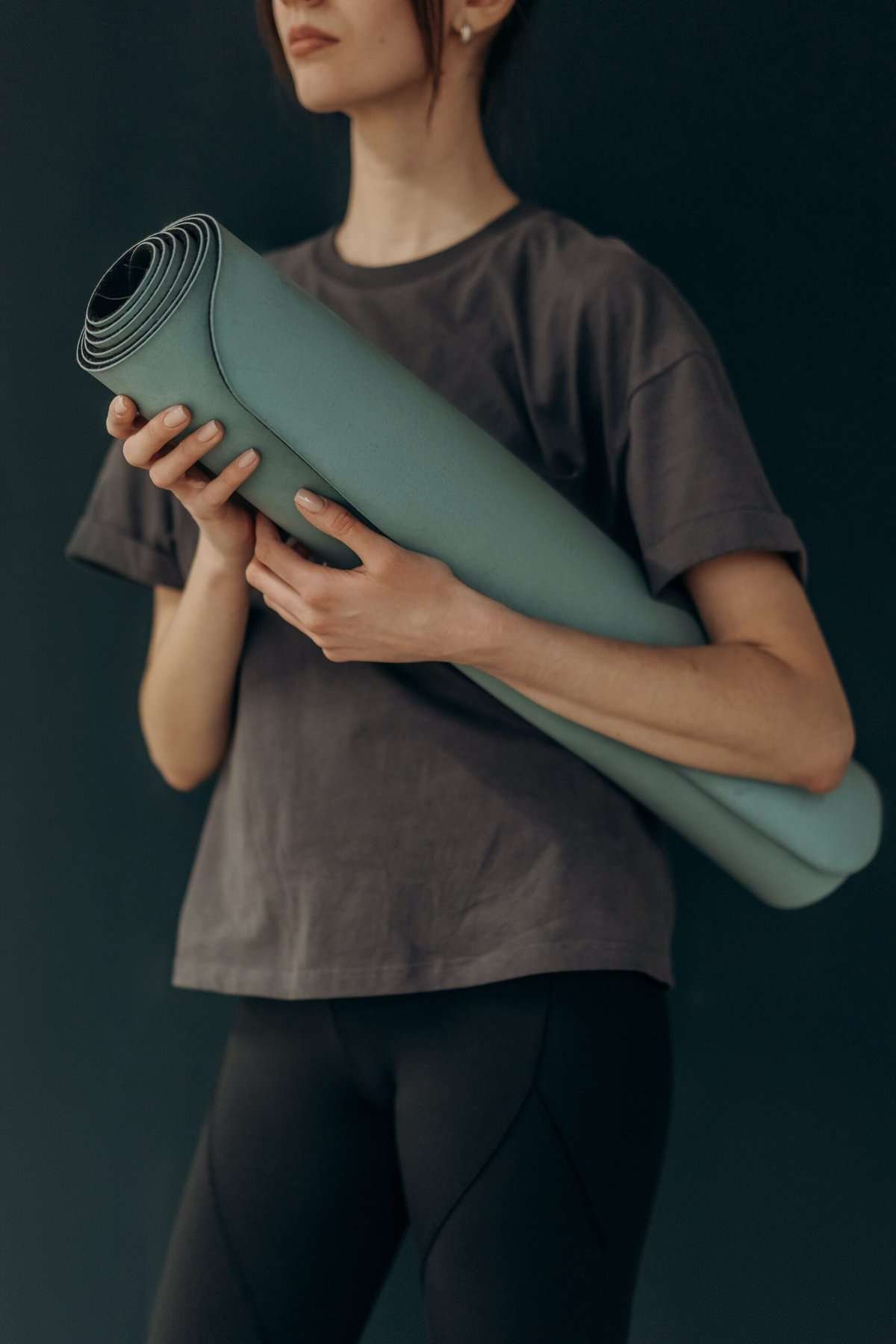If you’re looking to enhance your skateboarding skills, one crucial aspect to focus on is your balance and stability. Whether you’re a beginner, intermediate, or advanced skateboarder, maintaining proper balance and stability is essential to execute tricks, maneuvers, and maintain control on your board. In this article, we’ll explore effective techniques and exercises that can help you improve your balance and stability on a skateboard, allowing you to confidently navigate any terrain and push your skills to new heights. So, grab your board and get ready to take your skateboarding to the next level!

Improving Balance and Stability on a Skateboard
Skateboarding is a thrilling sport that requires a combination of skill, agility, and balance. Whether you are a beginner or an experienced skateboarder, it is essential to continually work on improving your balance and stability on the board. By doing so, you can enhance your skateboarding skills, prevent falls and injuries, perform advanced tricks, and increase your confidence and control while riding. In this article, we will explore various techniques and exercises to help you improve your balance and stability on a skateboard.
Importance of Balance and Stability
Before diving into the specific techniques, let’s first understand the importance of balance and stability in skateboarding. Having good balance and stability is crucial for several reasons. Firstly, it allows you to execute tricks and maneuvers smoothly, making your skateboarding style more fluid and controlled. Additionally, maintaining balance and stability helps prevent falls and injuries, reducing the risk of accidents while riding. Finally, by improving your balance and stability, you can perform advanced tricks that require precise control and coordination.
Understanding Your Center of Gravity
To improve your balance and stability on a skateboard, it is essential to understand your center of gravity. Your center of gravity refers to the point in your body around which your weight is evenly distributed. While riding a skateboard, maintaining a centered center of gravity is crucial to staying balanced on the board. By keeping your weight properly distributed, you can achieve better control and stability, reducing the chances of tipping over.
Identifying your neutral position is the first step in understanding your center of gravity. Stand on your skateboard with your feet shoulder-width apart, slightly bent knees, and your body relaxed. Take a moment to feel the balance on the board, ensuring that your weight is evenly distributed between your front and back foot. This centered weight distribution will help you maintain stability while riding.
Developing Leg Strength
To improve your balance and stability on a skateboard, it is essential to have strong leg muscles. Your legs play a significant role in keeping you stable on the board. By strengthening your leg muscles, you can enhance your ability to maintain your balance and control while riding.
Various exercises can help improve leg strength. Squats are an excellent exercise for strengthening the quadriceps, hamstrings, and glutes. To perform squats, stand with your feet shoulder-width apart, lower your body by bending your knees, and then return to a standing position. Repeat this movement for several reps.
Lunges are another effective exercise for building leg strength. Stand with one foot in front of the other, lower your body by bending both knees, and then return to the starting position. Alternate legs and repeat this exercise for several reps.
Calf raises can also help strengthen your legs. Stand on the edge of a step or a raised surface with the balls of your feet. Slowly raise your heels as high as possible, hold for a few seconds, and then lower them back down. Repeat this movement for several reps.
In addition to these exercises, training with a balance board can significantly improve leg strength and stability. By performing exercises on a balance board, you engage the major leg muscles while simultaneously working on your balance and coordination.

Practicing Proper Posture
Maintaining proper posture is crucial for improving balance and stability on a skateboard. Proper posture involves aligning your head, spine, feet, and shoulders correctly. By practicing good posture, you can optimize your body’s position on the board, allowing for better control and balance.
To achieve proper posture, start by aligning your head and spine. Keep your head up, looking straight ahead rather than staring at the ground. Your spine should be upright, with your shoulders relaxed and your chest slightly lifted. Avoid hunching your shoulders or leaning forward, as these postures can disrupt your balance and stability on the board.
The positioning of your feet and shoulders also plays a significant role in maintaining proper posture. When riding a skateboard, your feet should be parallel and shoulder-width apart. Your back foot should be positioned slightly towards the tail of the board, while your front foot should be positioned slightly towards the nose. This stable stance allows for better control and balance while riding.
Mastering Basic Stance
To improve your balance and stability on a skateboard, mastering the basic stance is essential. There are two primary stances in skateboarding: regular and goofy. In the regular stance, your left foot is positioned at the front of the board, while your right foot is at the back. In the goofy stance, it is the opposite, with your right foot at the front and your left foot at the back.
Determining your natural stance is crucial for finding stability on the board. To determine your natural stance, stand upright and have someone gently push you from behind. Whichever foot you instinctively step forward with to regain your balance is likely your leading foot. Experiment with both stances to see which one feels more comfortable and stable for you.
Maintaining a stable stance is essential for improving balance and stability on a skateboard. Keep your feet aligned with the board, ensuring that your weight is evenly distributed between your front and back foot. By practicing and mastering your basic stance, you can establish a strong foundation for advancing your skateboarding skills.

Enhancing Core Muscles
Building strength in your core muscles is another key aspect of improving balance and stability on a skateboard. Your core muscles play a crucial role in maintaining balance, as they help stabilize your body while riding. By strengthening your core, you can improve your ability to stay balanced on the board.
Several exercises can help enhance your core muscles. Planks are highly effective for targeting the abdominal muscles, lower back, and hip muscles. To perform a plank, start in a push-up position, with your forearms resting on the ground and your body in a straight line. Hold this position for as long as you can, ensuring that your core remains engaged throughout.
Russian twists are another excellent exercise for targeting the core muscles. Sit on the ground with your knees bent, lean back slightly to engage your abs, and lift your feet off the ground. Twist your torso from side to side while keeping your core engaged. Repeat this movement for several reps.
Leg raises are also beneficial for strengthening the core muscles. Lie flat on your back, with your arms by your sides and your legs extended. Lift your legs off the ground towards the ceiling, keeping them straight. Lower them back down slowly and repeat this movement for several reps.
Side planks are effective for targeting the oblique muscles. Start by lying on your side, resting on one forearm and lifting your hips off the ground. Keep your body in a straight line and hold this position for as long as you can. Switch sides and repeat the exercise.
By incorporating exercises that target your core muscles into your workout routine, you can significantly improve your balance and stability on a skateboard.
Engaging in Regular Stretching
Stretching is an essential component of any skateboarding training program. Regular stretching helps improve flexibility, increase the range of motion in your joints, and prevent injuries. By incorporating stretching exercises into your routine, you can enhance your balance and stability on a skateboard.
Dynamic warm-up exercises are an excellent way to prepare your body for skateboarding. These exercises involve moving your body through a full range of motion to increase blood flow and warm up your muscles. Examples of dynamic warm-up exercises include arm circles, leg swings, and walking lunges.
Static stretches are beneficial for increasing flexibility and elongating muscles. Hold each stretch for 15-30 seconds, making sure to breathe deeply and relax into the stretch. Examples of static stretches for skateboarding include quad stretches, hamstring stretches, and calf stretches.
Foam rolling is another effective technique to include in your stretching routine. Foam rolling uses a cylindrical foam roller to apply pressure to tight and sore muscles, promoting muscle recovery and flexibility. By rolling the foam roller over various muscles, you can release tension and improve your overall skating performance.
Yoga or Pilates classes are also worth considering for improving balance and stability. These practices focus on body awareness, flexibility, and core engagement, which are all essential for maintaining balance on a skateboard. Joining a yoga or Pilates class can provide you with structured workouts and expert guidance to improve your skateboarding abilities.

Improving Coordination and Proprioception
Coordination and proprioception are essential for maintaining balance and stability on a skateboard. Coordination involves the ability to control your body’s movements effectively, while proprioception refers to your body’s awareness of its position in space. By improving your coordination and proprioception, you can enhance your balance and stability on the board.
Coordination exercises can help improve your body’s ability to move in a controlled and precise manner. Balance board training is an excellent way to enhance coordination while simultaneously working on your balance and stability. By standing on a balance board and trying to maintain your balance as the board moves, you engage various muscles and challenge your coordination skills.
Cone drills are another effective way to improve coordination. Set up a series of cones in a straight line or in a pattern, and practice maneuvering through them while maintaining your balance on the skateboard. This exercise requires quick reflexes and coordination, helping you improve your ability to control your board in tight spaces.
Slalom skateboarding is a fun and challenging activity that can help improve coordination and balance. Set up a slalom course using cones or other markers, and practice weaving in and out of the obstacles while riding your skateboard. This exercise requires you to make quick and precise movements, enhancing your coordination skills.
Practicing manual and nose manual tricks can also help improve coordination and proprioception. Manuals involve balancing on either the back wheels or the front wheels of the skateboard while moving, while nose manuals specifically involve balancing on the front wheels. By practicing these tricks, you can improve your ability to maintain balance and control on the board.
Maintaining a Proper Foot Placement
Maintaining a proper foot placement is essential for improving balance and stability on a skateboard. Your feet act as the connection between your body and the board, and the way you position them greatly affects your ability to stay balanced.
When riding a skateboard, ensure that your feet are positioned parallel to the board and shoulder-width apart. Your back foot should be placed near the tail or on the tail, while your front foot should be positioned slightly behind the bolts near the front of the board. This positioning provides stability and control while riding.
Experimenting with foot placement can also help improve your balance and stability. Try adjusting the angle of your front foot or shifting your weight slightly forward or backward to find the position that feels most comfortable and stable for you. Everyone’s body and riding style are unique, so it is essential to find the foot placement that works best for you.

Experimenting with Various Terrain
To further improve your balance and stability on a skateboard, it is beneficial to experiment with various types of terrain. Transitioning from smooth to rough surfaces or riding your skateboard in different environments can enhance your ability to adapt to different conditions and maintain your balance.
When you become comfortable riding on smooth surfaces, challenge yourself by gradually introducing more uneven or rougher surfaces. Riding on cracked pavement, cobblestones, or even off-road trails can help improve your balance and stability. These surfaces require you to make quick adjustments in your body position and weight distribution, challenging your balance skills.
Skateboarding in different environments also provides opportunities to practice your balance and stability. Try riding in skate parks with ramps, bowls, and rails, as well as street skateboarding in urban areas. Make sure to familiarize yourself with the different obstacles and curbs you may encounter, as adapting to these variations will enhance your overall skateboarding abilities.
In conclusion, improving your balance and stability on a skateboard is crucial for enhancing your skateboarding skills, preventing falls and injuries, performing advanced tricks, and increasing your confidence and control while riding. By understanding your center of gravity, developing leg strength, practicing proper posture, mastering the basic stance, enhancing core muscles, engaging in regular stretching, improving coordination and proprioception, maintaining proper foot placement, and experimenting with various terrain, you can greatly improve your balance and stability on a skateboard. Remember to approach these techniques and exercises with consistency and patience, as it takes time and practice to refine your skills. So, get out there, have fun, and keep pushing yourself to reach new levels of balance and stability on your skateboard!

